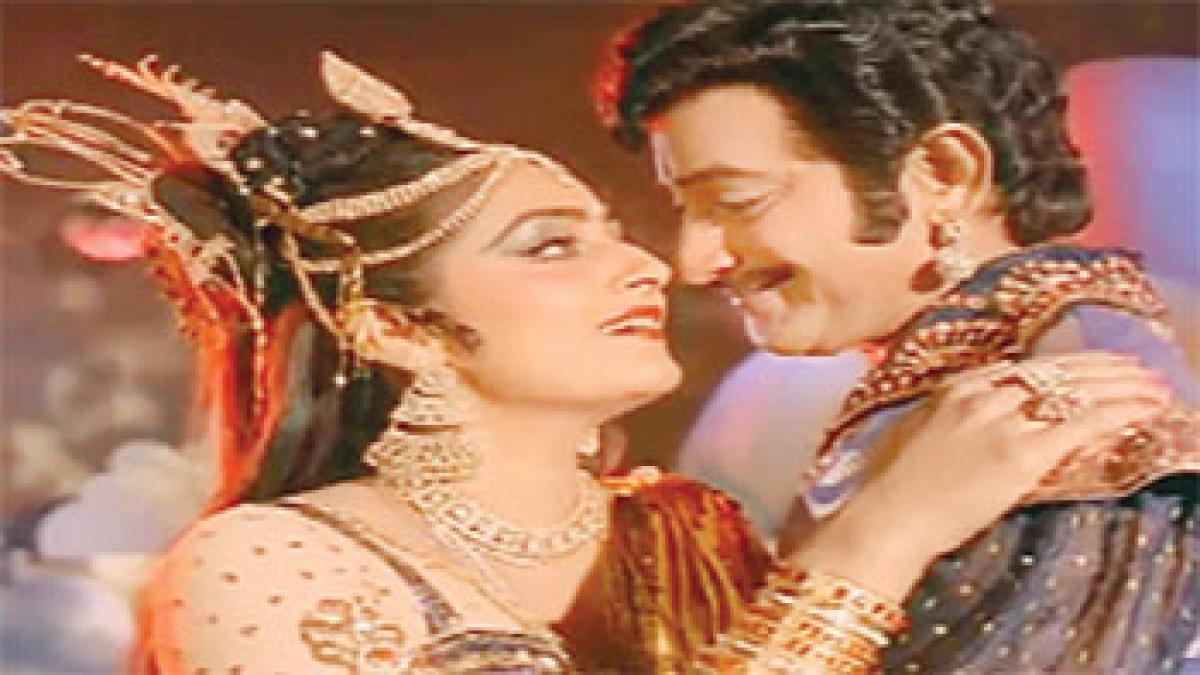Live
- Against India's growth story: Congress faces backlash over allegations against Adani Group
- Opposition again rakes up mango kernel deaths in Odisha Assembly
- Assam Police foiled infiltration attempt from Bangladesh: CM Sarma
- Hemant Soren to take oath as Jharkhand CM tomorrow, top INDIA bloc leaders to attend
- Mamata Banerjee to attend Hemant Soren’s swearing-in ceremony
- JMM raises doubts on EVMs, claims party would have got more seats through ballot papers
- Sheohar MLA slams Chirag Paswan for not campaigning for Deepa Manjhi in bypoll
- 450 drug users rejoin families after recovery in Afghanistan
- Turkey neutralises nine PKK members in Iraq
- Manipur: Mobile internet suspended for two more days in nine districts
Just In

Among the many non-Telugu music directors, who composed for Telugu cinema, Bappi Lahiri has a unique distinction. He had this privilege of not only getting involved in the remakes of Telugu hits in Hindi but also directly setting tunes for the originals, with top names like Krishna, Chiranjeevi, Balakrishna, etc. for a decade or so, beginning in the mid-80s.
 Among the many non-Telugu music directors, who composed for Telugu cinema, Bappi Lahiri has a unique distinction. He had this privilege of not only getting involved in the remakes of Telugu hits in Hindi but also directly setting tunes for the originals, with top names like Krishna, Chiranjeevi, Balakrishna, etc. for a decade or so, beginning in the mid-80s.
Among the many non-Telugu music directors, who composed for Telugu cinema, Bappi Lahiri has a unique distinction. He had this privilege of not only getting involved in the remakes of Telugu hits in Hindi but also directly setting tunes for the originals, with top names like Krishna, Chiranjeevi, Balakrishna, etc. for a decade or so, beginning in the mid-80s.
Lahiri makes no effort to deny this. In an interview to a national daily more than five years ago, he admitted:“I owe 40 per cent of my success to Hindi films produced by South Indian producers like ‘Himmatwala', ‘Mawaali', ‘Maqsad', Tamil and Telugu films such as ‘Big Boss', ‘Gangleader', etc. I salute the South for contributing immensely to my success.”
The song for this week is from one of his 1986 release ‘Simhasanam,’ the first 70 mm stereophonic sound film in Telugu. Superstar Krishna, racing away on his success track by then had just shaken off the intense competition from NTR, who had gone into a terrific career in politics, emerging as the State chief minister. This film was directed by him under his home banner Padmalaya Films and went on to become a hit at the BO.
Krishna, in a double role, had a triple treat for his fans in the film- Jayaprada, Radha and Mandakini, who had just then made a phenomenal impact with her Raj Kapoor film debut ‘Ram Teri Ganga Maili’, a few months ago in 1985. The other two southern sirens too were by then great favourites of the young crowd all across south India.
Lahiri, with his trade mark six-minute plus songs replete with a noisy backdrop of rolling drums and incessant humming begins this duet too in a similar fashion. Nearly a minute after the music begins, the lead pair of Krishna and Jayaprada begin their clap and step routine, the hero as wooden and dance-unfriendly as he is known to be.
“Aakasamlo oka tara na kosam ochindi ee vela” begins the hero, a full 90 seconds into the duet. The setting is in a huge park kind of a location, with a large number of junior artistes and a variety of flowers to boot. Only the costumes change for the loving jodi, which move closer to and away from each other in the vintage trolley shot moves, a famous technique of yore.
“Ennallu ee viraham” enquires the sultry heroine, as the song picks up pace with a robust percussion as its base. It is the world-famous Brindavan Gardens of Mysore now that the hero and heroine decide to cavort in. Rather suggestively, fountains spray water at top speed as Jayaprada and Krishna slowly rise up to the top of the water formation. “My beauty must become the waves of music” or something to that effect is what the heroine insists as she jiggles around energetically with the hero just about keeping pace.
The choreography of the ‘80s, caricatured as nothing more than routine warm-up exercise moves, is amply justified as the lovey-dovey couple just indulge in routine limb movements, back and forth. Kudos is definitely in order for Krishna to have endured the torture of “steps” in movie after movie in those days, with his fans fully aware of his two left feet problem.
Into the fifth minute, the song slows down and the humming gets irritatingly repetitive. Never at a paucity for time, the Telugu fans surely did not seem to have taken objection to such things, as Lahiri went on to compose songs all through in a similar manner-long-winding and with jerky interludes. Of course, the undying love is depicted with the coochie cooing confined to close-ups of an attempted kiss, keeping up with the conservatism of the times.
Rather interestingly, the lyrics go on to suggest that’ the love between the pair has developed over time’, an indirect coincidence given the laggardly pace to the number itself. Three decades later, one can only trace it to a growing up phase as modern songs are just around three minutes or so. No complaints however from the fans of Krishna and Jayaprada, who still swear on social media that it is a great retro number to dance even today!
Song : Aakasamlo oka tara
Film : Simhasanam (1986)
Singers : Raj Sitaram,P Suseela
Lyrics : Athreya/Veturi
Music : Bappi Lahiri
By:K Naresh Kumar

© 2024 Hyderabad Media House Limited/The Hans India. All rights reserved. Powered by hocalwire.com







